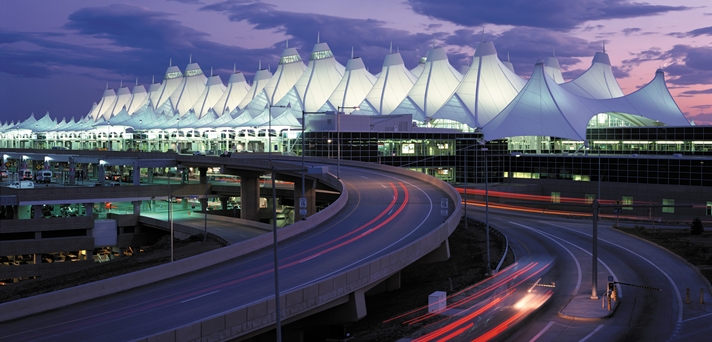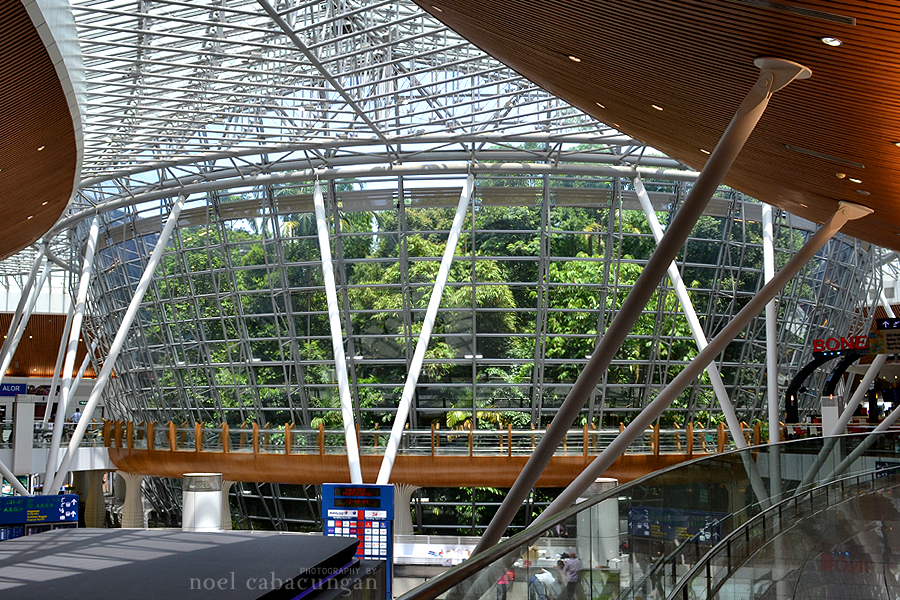Unless you travel for work, the mystique of the airport, the excitement of a travel day is a source of equal parts anxiety and excitement. It’s not only the planes, the trains, and the automobiles, but the sights and smells. It’s the agriculture and the architecture too.
For the states who host the places where our airplanes connect, the airport is their one shot to tell travelers everything about the world outside the airport without giving away the store. It’s their tiny window to show off the local aesthetic tastes.
Most cities make at least a showing with their airport. Whether or not those hubs represent them well, that’s another story, but some of the airports out there are marvelous.
These are the 15 through which you should route your travel, just so you can see them.
Beijing International – Beijing, China
You’re in luck if you’re going to Beijing or anywhere Air China flies. This airport is the main airport serving the city and the main hub for the aforementioned, Air China. From the exterior design to the domed interiors, this airport is endless science fiction style eye-candy.
Barajas Airport – Madrid, Spain
Opened in 1928, this is one of, if not the oldest airport on this list, which proves Madrid has been stylish longer than any of us. As cities look to relocate their hubs outside the city, Barajas remains within the city limits. The highlight of this airport is terminal 4, with sweeping lofted ceilings and massive, tubed, structural roof supports.
Carrasco International – Monteverde, Uruguay
An airport since the ‘40s, Uruguayan architect, Rafael Viñoly designed the Carrasco International Airport. From the moment you walk in to check into your flight, you’ll have to pick your jaw up off the ground. So. Much. Glass. Look how the roof is one endless line with no corners.
Chek Lap Kok Airport – Hong Kong, China
Built on the ocean, from reclaimed land off Lantau Island, then renamed Check Lap Kok, the airport opened in 1998. It is Hong Kong’s International Airport, an engineering marvel from the seabed to the unique look of its terminals and concourses.
Denver International – Denver, U.S.A.
What appears to be a tent city, the Denver International Airport opened as the most technologically advanced airport in 1995. On top of being uniquely styled from the outside, the interiors are like no other airport in the United States. It features a unique feature of regular art exhibits in the main terminal and concourse A.
Dubai International Airport – Dubai, United Arab Emirates
From the city that puts Las Vegas to shame, the Dubai International Airport is a massive hub of travel, international and local, human and freight. It houses the largest human-made waterfall in any airport worldwide. The airport is so big, you may think you’ve seen Dubai just by switching planes.
Incheon International – Seoul, South Korea
Much of what Incheon is today came about because of the 1988 Olympics. It is the largest airport in Seoul and brags a 0.0001% baggage mishandling rate. Inside the airport, there are private sleeping rooms, gardens, a museum, skating rink, casino and a golf course. Check out the exterior shot of the design elements.
Kansai International Airport – Osaka, Japan
When you have no land left where an airport could go without tearing down buildings, you do the next best thing. You build an island, then build an airport on top of it. The bridge to the island alone cost $1-billion. The design of the airport, its airfoil roofline, feels like another science fiction movie set.
King Abdulaziz International Airport – Jeddah, Saudi Arabia
Named for the Saudi king by the same name, travelers know the busiest airport of Saudi Arabia for its Hajj terminal. The designers build this terminal special for Islamic pilgrims en route to nearby Mecca. The Hajj terminal is so massive, it can handle 80,000 passengers at one time.
Kuala Lumpur International Airport – Sepang, Malaysia
The main hub for Malaysia, the Kuala Lumpur International Airport is on one of the largest plots of land for an airport in the world. The main terminal building is a key feature, with vaulted ceilings emphasizing natural light. Satellite Terminal A is a duty-free shopping mall with glass walls stretching several stories up to house the airport’s own Malaysian rainforest.
Malvinas Argentinas Airport – Ushuaia, Argentina
The Malvinas Airport is the planet’s southernmost international airport, a hub for cruise ships. It sits on an island, which is unique enough, but the main terminal is what defines this airport. While most airports leverage metal and glass, this one feels like a large ski chalet. The massive beams that vault the ceilings are all solid wood. In fact, there’s wood everywhere. It is sublime.
Marrakech Menara Airport – Morocco
Defined by its diamond-shaped exterior and stretching overhang, the diamond structures from the outside carry into the interior design. The diamond cutouts create light play all day from the sun and property lighting, shifting the feeling of the architecture all day long.
O’Hare International Airport – Chicago, USA
O’Hare may be one of the only airports that provide cots in a special area with low-lighting for stranded passengers, but hopefully, that’s not what strikes you about the hub. Terminal 1, exclusive to United Airlines, features a lighted pathway where travelers enjoy a neon light show surrounding the moving sidewalk.
Sondika Airport – Bilbao, Spain
Started in the 30s, then finished for civilians in the ‘40s, the Bilbao airport is uniquely located in a valley between mountains. The exterior of the terminal stretches like wings, with a pointed tip at the center. They call it The Dove, La Paloma in Spanish, because of the white exterior wings.
Wellington International Airport – Wellington, New Zealand
The Wellington Airport in New Zealand is an otherwise boring building from the ‘30s but for “the Rock.” That is what they’ve nicknamed the international terminal made of geometric patterns and atypical architectural structures.
Source: Thrillist, Travel and Leisure















